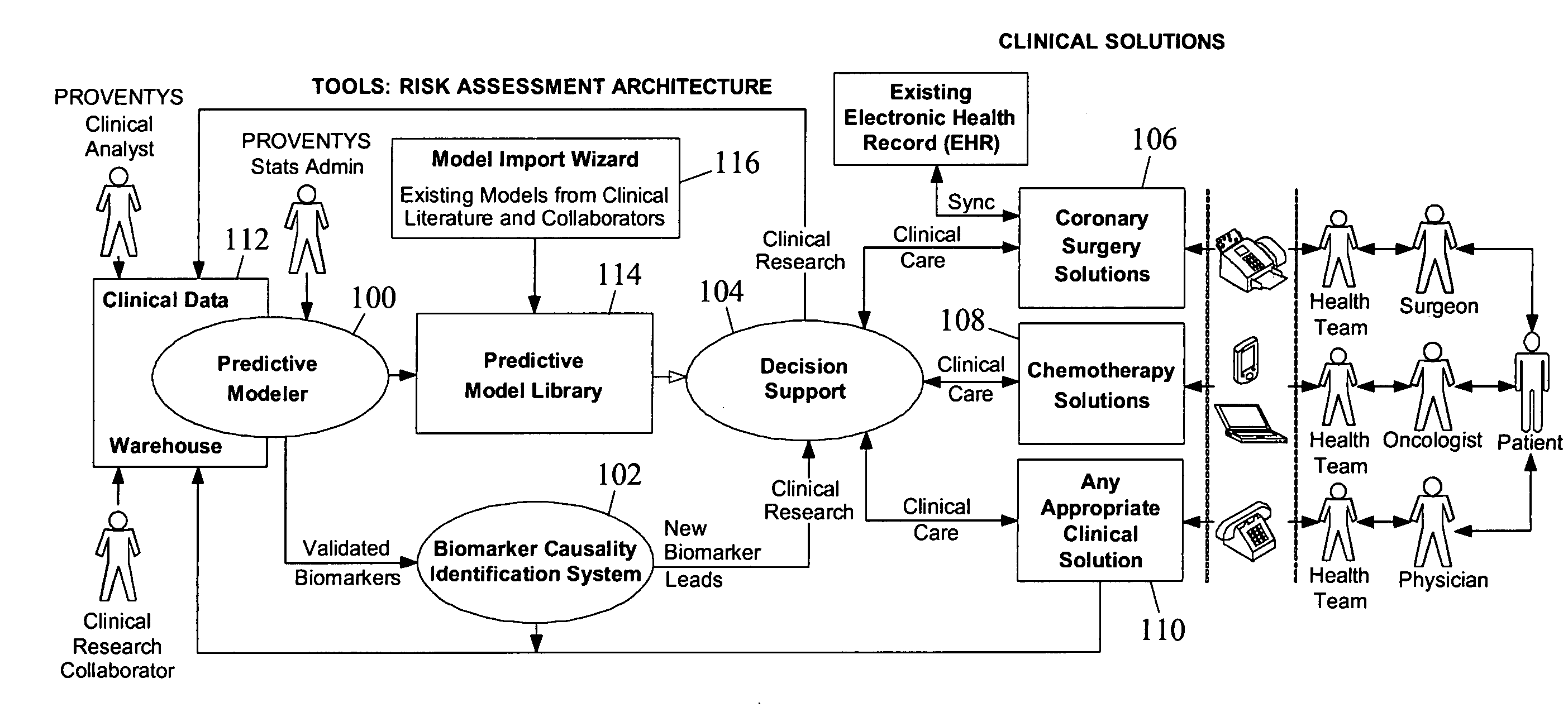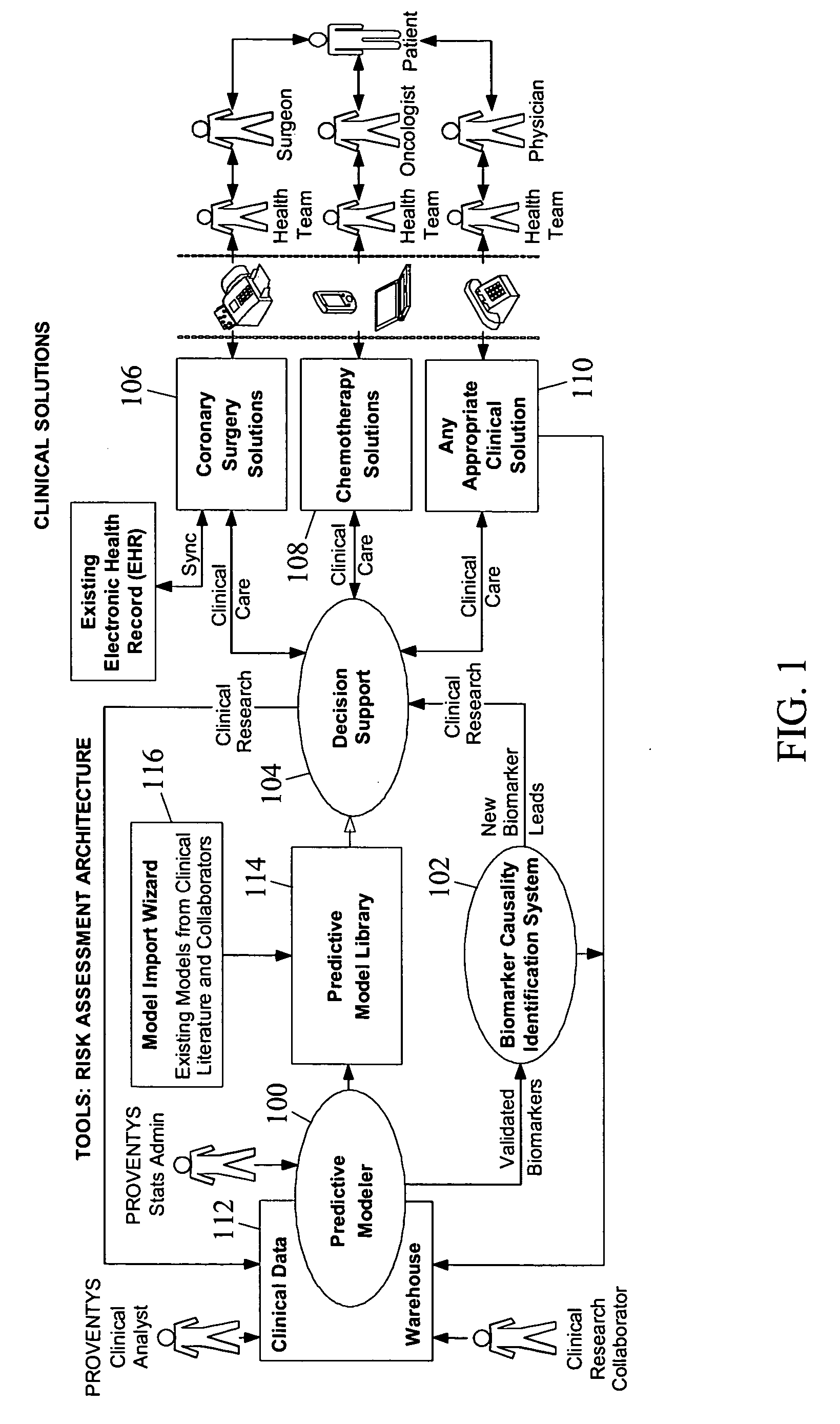Methods, system, and computer program products for developing and using predictive models for predicting a plurality of medical outcomes, for evaluating intervention strategies, and for simultaneously validating biomarker causality
a predictive model and medical outcome technology, applied in the field of generating and applying predictive models to medical outcomes, can solve the problems of conventional predictive models not considering factors, no standard methods available in the current predictive model, and predictive models typically
- Summary
- Abstract
- Description
- Claims
- Application Information
AI Technical Summary
Problems solved by technology
Method used
Image
Examples
Embodiment Construction
[0029]FIG. 1 is a block diagram illustrating an exemplary architecture of a system for developing and using predictive models according to an embodiment of the subject matter described herein. Referring to FIG. 1, the system includes a predictive modeler 100, a biomarker causality identification system 102, and one or more decision support modules 104-110. Predictive modeler 100 may generate predictive models based on clinical data stored in clinical data warehouse 112 and based on new factors identified by biomarker causality identification system 102. The models generated by predictive modeler 100 may be stored in predictive model library 114. Predictive model library 114 may also store models imported by a model import wizard 116. Model import wizard 116 may import existing models from clinical literature and collaborators.
[0030] Biomarker causality identification system 102 may automatically extract biomarkers from clinical literature and store that data in clinical data wareho...
PUM
 Login to View More
Login to View More Abstract
Description
Claims
Application Information
 Login to View More
Login to View More - R&D
- Intellectual Property
- Life Sciences
- Materials
- Tech Scout
- Unparalleled Data Quality
- Higher Quality Content
- 60% Fewer Hallucinations
Browse by: Latest US Patents, China's latest patents, Technical Efficacy Thesaurus, Application Domain, Technology Topic, Popular Technical Reports.
© 2025 PatSnap. All rights reserved.Legal|Privacy policy|Modern Slavery Act Transparency Statement|Sitemap|About US| Contact US: help@patsnap.com



